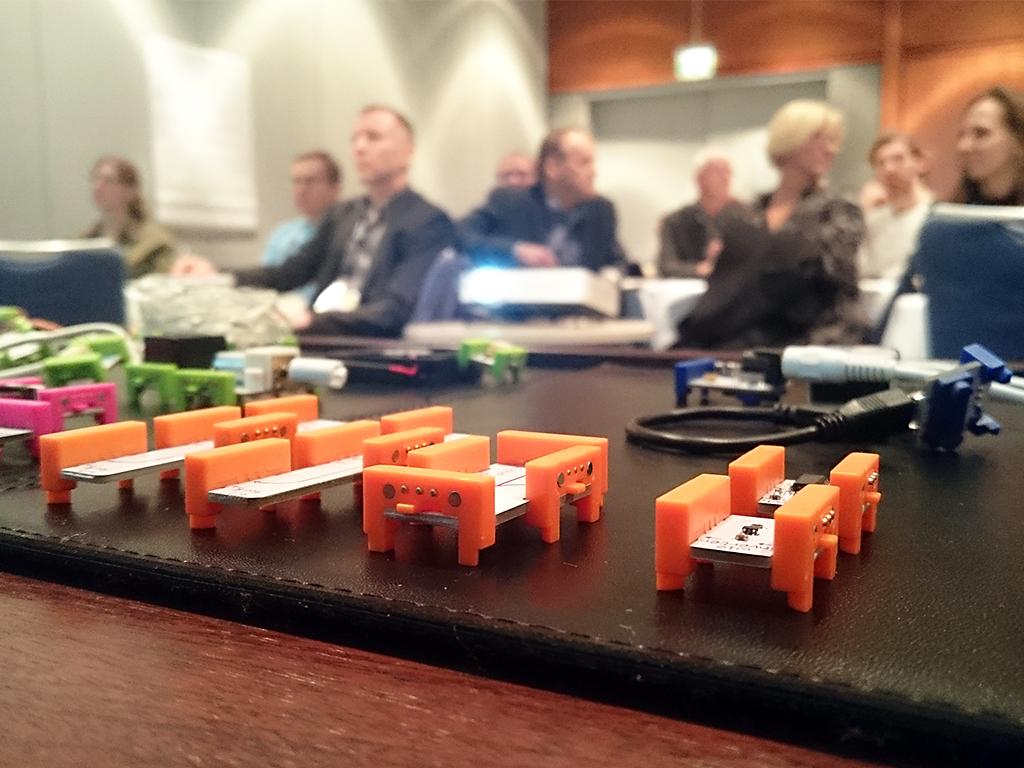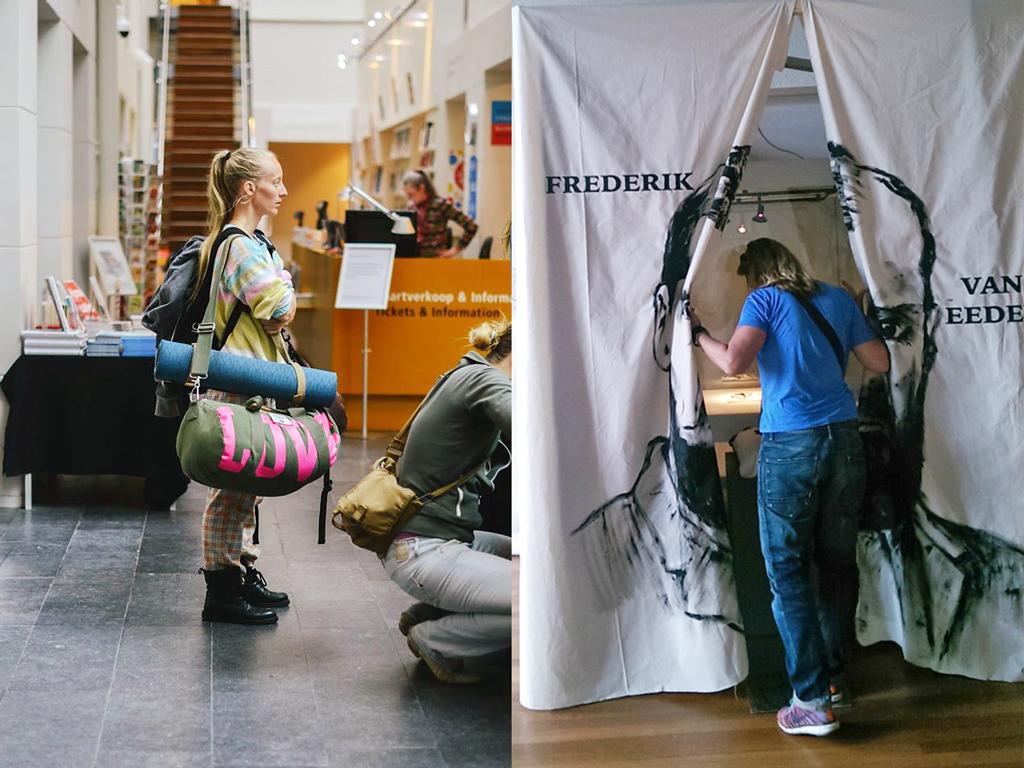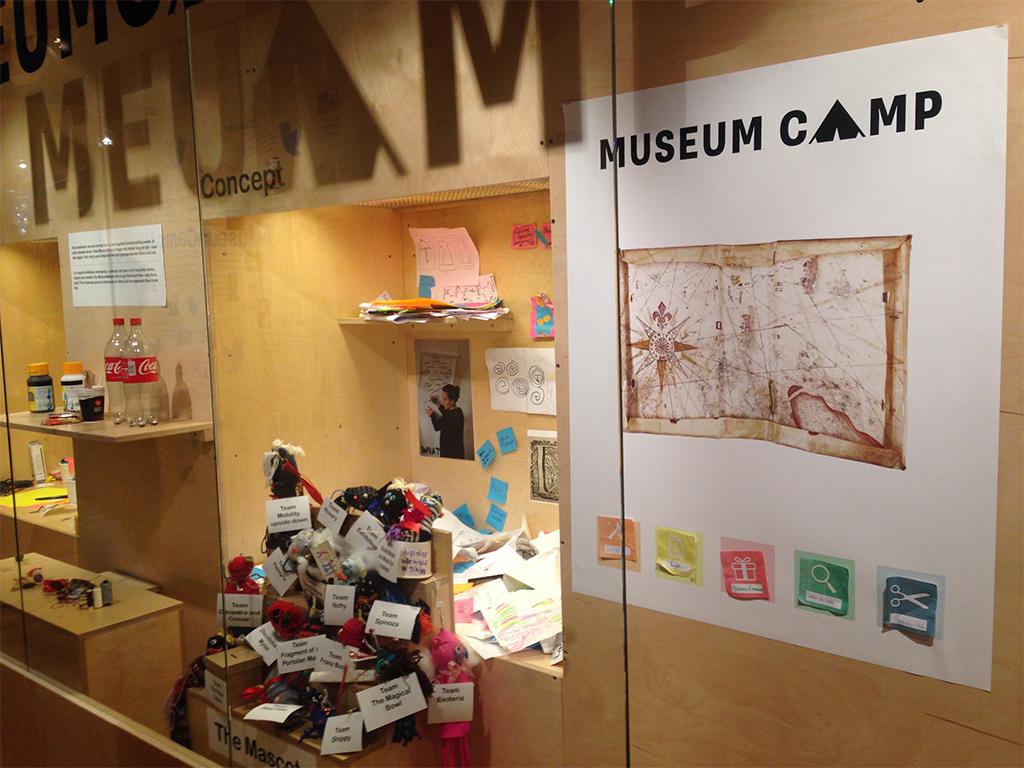Waag and the University of Stuttgart, two of the partners in the meSch project, have conducted a workshop at the OEB (the Online Educa Berlin) conference on December 2nd, 2015. OEB is the global, cross-sector conference on technology supported learning and training. Thomas Kubitza, Suzanne Heerschop and myself hosted the workshop, 30 people from a diverse backgrounds in the educational field participated.
The workshop was geared towards educators, letting them explore the meSch technology as a potential educational tool. meSch aims to encourage and empower cultural heritage professionals to create sustainable (tangible) interactive experiences that connect the physical dimension of museums and exhibitions with relevant digital content in novel ways. We presented the meSch tools as ‘physical storytelling’ tools that have the potential to learn pupils about stories, technology and interactive experiences, beyond what is now often offered as digital storytelling projects.
Electronic building blocks
Central in the meSch technology is the meSchUP kit, a set of electronic building blocks, among which are NFC tags and beacons - with a fully functional server included to run them,- that are easily programmable and can be connected to e.g. android devices. To connect them and get some easy interaction going no soldering, wiring or programming is needed. And it all fits in a shoebox…. We demoed the meSchUP kit to give the participants an idea of its possibilities. Within minutes we put together a network of communicating (off the shelve) devices. Green and red blinking beacons through a swiping motion on a smart phone. You prefer blue? No worries, fixed. Want to change the interaction to a projection? Also possible with just a little tweak.
Ever played that children’s game in which one kid draws the head, the next draws the body and the third kid draws the feet? We reworked this format in to a canvas that challenged our participants to think of surprising modular interaction models. In this case the canvas consisted of three blocks -content, form and interaction- and participants together dreamed up an interactive exhibit, randomly mixing their ideas on content, form and interaction.
Scenarios
In one scenario, visitors were invited to unlock a collection of James Bond video clips (content) by dancing around the museum space (interaction), the videos would be projected on walls of the museum (form). Or visitors engaging in a conversation (interaction) with a hologram (form) on recent history (content). Not your standard interactions in a museum. ☺
The creativity and enthusiasm with which the participants came up with exiting digital storytelling scenario’s, proved that it doesn’t take a lot to create an inspiring concept. The trick is to then prototype and test it. So next up participants built their concept in clay and used some of the sensors we brought to illustrate the interaction and user experience they had in mind.
The reason for us to head down to OEB was to uncover the potential of the meSchUP kit for educational purposes. So after giving the participants a glimpse of it possibilities, we had a lively discussion on the educational value of the experience, the sensors presented, and our focus on tactility of the experience.
Some quotes of the participants:
- these type of tools teach kids to be more innovative and collaborative, enhancing their ‘soft’ skills, like agility, creativity etc.;
- these tools can be used to change our day to day real life environment into ‘information sources’: think of using the school yard for a biology lesson, overlaying information through AR on your physical surrounding;
- these tools address different learning styles, which could get ‘difficult’ students in and could help a teacher rework topics that are difficult when dealt with in class.
And participants identified a number of challenges for the use of the kit:
- Schools potentially see it as an ‘extra’ to an already full curriculum and working with technology might be outside of the teachers’ comfort zone. So start working with teachers first!
- Students can only concentrate on one thing at the time, either content, or form, or interaction, so be very clear on the purpose of using the kit.
We will take this feedback to heart when exploring exploitation possibilities and possible strategic routes for uptake outside the heritage domain. This process will benefit from the workshop participants who volunteered to be included in the next stage of the project, to try things out and explore didactical opportunities. So all in all, a good day with some valuable lessons learned and possible collaborations. Also intrigued about the meSch UP kit? Follow our developments through the meSch blog.



